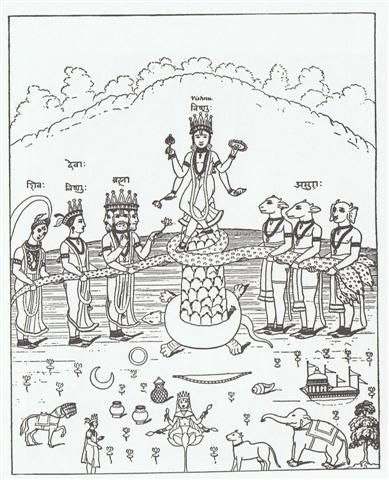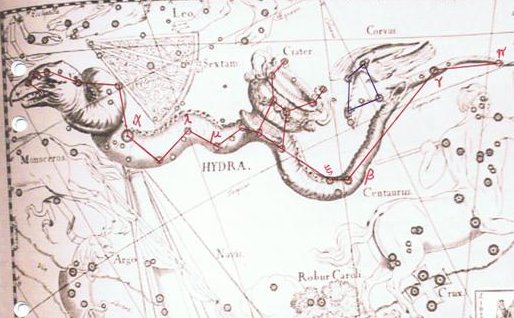1. Possibly also the K text has 2 'star pillars', one preceding Aldebaran and the other preceding Minkar:
The 3 lines inside henua in 'September 19 are probably referring to the 3 lines outside 'henua' in 'May 27:
262 - 147 = 115 = 5 * 23 = 460 / 4. And 364 - 115 = 249, the RA day of Antares. An original single henua 'staff' may have broken, leaving one piece in 'May 27 and the other in 'September 18: ... The dream soul went on. She was careless (?) and broke the kohe plant with her feet. She named the place 'Hatinga Te Koe A Hau Maka O Hiva'. The dream soul went on and came to Roto Ire Are. She gave the name 'Roto Ire Are A Hau Maka O Hiva'. The dream soul went on and came to Tama. She named the place 'Tama', an evil fish (he ika kino) with a very long nose (he ihu roroa) ... 181 - 117 = 64, which could be equal to 364 - 300. In other words, the K text possibly covers the time when the Sun King does not rule, when his 'ruler' is broken. The time described by the K text is when Sun was absent on Easter Island. ... Several Asian cultures, including that of the Andaman Islands, believe that humanity emerged from a bamboo stem. In the Philippine creation myth, legend tells that the first man and the first woman were split open from a bamboo stem that emerged on an island created after the battle of the elemental forces (Sky and Ocean). In Malaysian legends a similar story includes a man who dreams of a beautiful woman while sleeping under a bamboo plant; he wakes up and breaks the bamboo stem, discovering the woman inside. The Japanese folktale 'Tale of the Bamboo Cutter' (Taketori Monogatari) tells of a princess from the Moon emerging from a shining bamboo section. Hawaiian bamboo ('ohe) is a kinolau or body form of the Polynesian creator god Kane. An ancient Vietnamese legend tells of a poor, young farmer who fell in love with his landlord's beautiful daughter. The farmer asked the landlord for his daughter's hand in marriage, but the proud landlord would not allow her to be bound in marriage to a poor farmer. The landlord decided to foil the marriage with an impossible deal; the farmer must bring him a 'bamboo tree of one-hundred sections'. The benevolent god Bụt appeared to the farmer and told him that such a tree could be made from one-hundred sections from several different trees. Bụt gave the him four magic words to attach the many sections of bamboo: 'Khắc nhập, khắc xuất', which means 'put in immediately, take out immediately'. The triumphant farmer returned to the landlord and demanded his daughter. The story ends with the happy marriage of the farmer and the landlord's daughter ... (Cfr at Ruhi.) The henua calendar is beginning in the center of this 'broken staff' season, and possibly its segments correspond to the sections - 'from several different trees' - building up the new and very tall 'bamboo tree'. Furthermore, the new great staff could have been necessary to drill new fire. There is a drilled hole in the K tablet just before spring equinox on Easter Island.
The rope form of a serpent makes it easy to imagine a fire drill somewhere in the center of the Hydra constellation.
We can guess Hydra = Tama - 'an evil fish (he ika kino) with a very long nose (he ihu roroa)'. Perhaps Hydra is nothing more than a very long 'nose' (like the trunk of an Elephant come loose). It ends at π Hydrae which we have not yet listed. |




